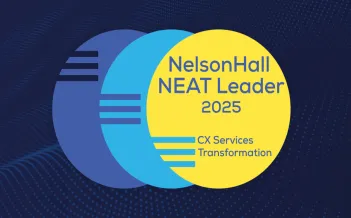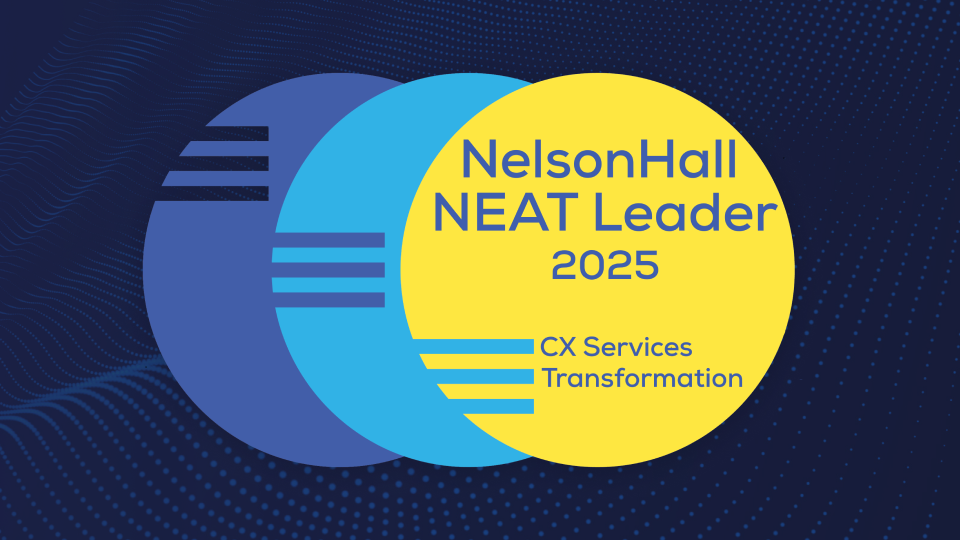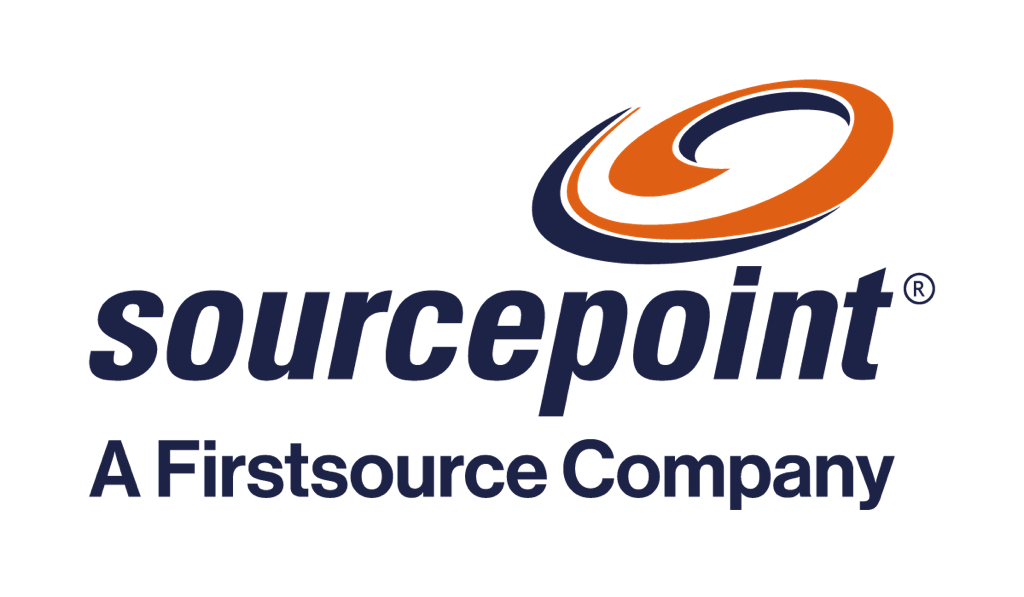This Slice of Healthcare podcast features Randall Shafer where he discusses how Firstsource helps hospitals connect patients with financial assistance like Medicaid.
Transcript
[00:00:00] Jared Taylor: Hey, everyone. Thanks so much for joining me on the Slice of Healthcare podcast. I’m your host, Jared Taylor. Today. I’m joined by Randy Shafer, the Executive Vice President and Head of Hospital Business at Firstsource. Randy, how are you today?
[00:00:12] Randy Shafer: Hey, Jared. Thanks. Good to, uh, good to be here, and thanks for the invite.
[00:00:16] Jared: Absolutely. And for the audience listening, we’re both in Florida right now and not too far. You’re probably– Besides the interviews I’ve done in Tampa, which is real close to where I am, uh, you’re probably the closest. So this-this is, uh, kind of unique. We’re-we’re experiencing the same weather, which is always, uh, which is always cool when we’re calling through this.
[00:00:33] Randy: That’s right. If we would’ve known that we could have done this in person.
[00:00:36] Jared: I know it’s, uh– But then as I was telling you I’m about to go to a conference.
[00:00:41] Randy: Yeah.
[00:00:41] Jared: -in person, right? It’s-it’s this whole awkward, uh, situation, but, uh, well, I’m excited to chat with you. I think we should dive right in for the audience. If you could tell us a little bit about your background, then we can kind of go into the why, how, what of Firstsource, and then some other-
[00:00:55] Randy: Yeah.
[00:00:55] Jared: -topics.
[00:00:56] Randy: That sounds good. Um, I’ve been with the organization for 21 years and my career has been through a series of a couple of acquisitions, uh, starting in healthcare services with a company called Urgent Healthcare. I was a managing principal. We sold Urgent Healthcare to a firm that everybody’s aware of called MedAssist. Uh, we sold the company in 2004, and then in 2007, we sold MedAssist to Firstsource. And MedAssist served as our US healthcare platform for Firstsource. And today, um, we, um, we’re actually part of the healthcare provider business which makes up about 800 hospital customers nationwide. So that’s a little bit of an overview of-of my, uh, my background.
[00:01:51] Jared: It’s-it’s, uh– Wow, 800 hospitals that’s a-a pretty big, uh, group you have there. And-and you’re also– I mean, what’s so great is that this podcast goes out to a healthcare community, right? So I don’t think people realize just how hard it is too outside of the healthcare community to sell into, uh, uh, you know, 800 hospitals. That’s-that’s extremely hard. So if you’re working with 800 hospitals, you’re doing something clearly right and doing it really well, um, or that doesn’t happen, right. That’s very difficult to-to get to that amount of, uh, of customers in the space.
[00:02:25] Randy: Yeah, you’re right. Um, hospital engagements are typically long-term tenured engagements. Um, the majority of our hospital clients have been our customers for more than 15 years. So, uh, so you’re right. It’s-it’s a-it’s a challenge, but once you establish that relationship, keeping the relationship, um, and-and keeping it trusted. Yeah, I’d like to refer to us as a trusted advisor, um, because we have exposure to so many hospital customers we get to share, uh, best-demonstrated practices across all of our client base.
[00:03:03] Jared: Yeah. When I-when I look at the landscape, I always say that unlike a lot of other industries, a customer relationship, right, in healthcare is the best companies make it more of like a partnership, like an advisor relationship. Because there’re so many things that can change, and there’re so many things that are up for discussion. Uh, it really takes a good understanding of-of both, uh, the-the hospital and then your business internally on both ends, right, to be able to-to build that really good relationship.
Uh, but I-I wanna kind of shift focus a little bit because there were some, uh, recent news around you teaming up with two Louisville–based companies, uh, basically to help underserved populations obtain healthcare, uh, coverage. Uh, can you talk a little bit more about this and that impact that it’s had on the community at large?
[00:03:54] Randy: Yeah, absolutely. In fact, um, to kind of set some context, um, let me explain the role we play within a hospital. And then I think you’ll appreciate why we were invited to this, uh, partnership discussion with, um, uh, an entity that typically we-we don’t do business with. So when you think about what we do, um, at the core of who we are and-and what we do is the patient. I define us as an end-to-end digitally enabled patient engagement services company. We are all things patient. And we-we connect with patients to be able to give them, um, equal access and equal opportunity to healthcare, and how to pay for it.
So we connect with patients at the point they need care. And as-as we all know, that need comes without asking for it. So now you gotta have care. How do you pay for it? I don’t know. So, typically, they’ll go to the ED. So ED because hospitals are required to treat emerging care. So they go in, they have access, still don’t know how I’m gonna pay for it. So our traditional model was putting industry experts on site so that we can engage face to face with patients, interview them, and then go down the path of what are the options, secure how they’re gonna pay for it, then they can focus on getting better and getting treated.
We’ve made a significant investment in digital technology to be able to better enable our services. So now we’re able to engage digitally with patients even at the point of scheduling. So we’re able to connect with them when it’s convenient for them because of our omnichannel communication, um, 24/7 access. They can send pictures of documents required to verify, um, eligibility and enrollment status requirements. And that has totally changed the landscape of how we engage with-with patients.
Now, fast forward to your question, um, we were approached by a company called LDG, uh, nation’s largest low-income housing developer. And the challenge that they faced was we think the majority of our tenants would qualify for financial assistance. Um, and the reason we’re-we’re reaching out for help when-when a tenant has a sick child, they just go to the ED, don’t know, but we know we get treated there. But there’re long wait times. Um, they miss work. They can’t pay their rent. It seems to be an income drain for the developer.
So right away, I said, you know, um, for us to have success, there are two real important factors, connecting with the patient and getting their cooperation. Those are the two key elements. What I saw with LDG was we saw both. We know where they’re at, we know where they live, and they’re incented to work with us. So it looked like a great model.
LDG was recommended to us by one of our, um, key hospital clients, Norton Healthcare in Louisville. And Norton was engaged with LDG on how do we provide healthcare to the low-income housing population. How do we improve their access? Because coming into the ED is expensive, right, for the-for the hospital as well.
So together, the three of us said, “Hey, let’s figure out a way. If we can meet them where they are, make sure that they have the proper coverage. Then as they need care, they can schedule the appointment. They can go directly to, uh, the doctor, directly to their procedure in a much more cost-effective way, and you eliminate the stress and the worry of how am I gonna pay for it. And the outcomes will be better.” And it just seems like a great model. So we kicked off our partnership, and, um, pretty excited about the potential of-of how that’s going to expand.
[00:08:38] Jared: Yeah. Thank you for, uh, for that. I think the breakdown beforehand really helped to kind of shape how that partnership came together and-and why-why it’s significant right for-for obviously all parties involved. So thank you for that-that breakdown. Appreciate it.
Uh, I would be curious, and I know, um, you-you mentioned some of this a little bit before, right? So basically aside from this event how you– One of my next questions gonna be how you help hospitals connect patients with financial assistance like Medicaid. Um, but then kind of another part to that was why should hospitals prioritize this? So I’d be curious to hear your thoughts on that.
[00:09:15] Randy: Yeah, it’s a great, uh, great question. So, um, not only do we help the uninsured, we also help the underinsured. So today, uh, self-pay is the third-largest payer, um, next to Medicaid and Medicare. And so with that growing population, self-pay means the patient is responsible, uh, to-to pay for it. It could be a deductible, it could be a copay, or it could be 100% of their care. So when you look at what we do and how we engage with self-pay being one of the greatest avenues hospitals get paid. If we don’t help secure a payment, that flows directly through to bad debt expense. So it goes as uncompensated care, and hospitals recognize that and have to reserve for it. And it becomes, um, bad debt expense. So trying to eliminate it and-and be able to solve for it. It-it-it really provides benefits, not only to the hospital and the patient, but also the community, because now the community feels it is, “Hey, if I have to go to the doctor, I know what the steps are. I know where to go. I know who to contact.” So it’s a great benefit for the patient, peace of mind, um, a better patient experience.
Um, and, you know, with healthcare moving to a consumer-driven model, patients are becoming more involved and participating with their care. If they’re going to have the burden of financial responsibility, they’re gonna participate and say, “I’m gonna shop for it. I’m gonna look for the best option for me.” With our digital engagement, we provide them with those channels and it-it proves to be a much better experience for them, and allows our customers, the hospital to focus on what they do best, and that’s delivery of clinical care.
[00:11:24] Jared: Interesting. Yeah, I’m– It’s– so this-this was what you’re-what you’re focusing in on. I was aware of some of the-the issues that you’re like solving, but, uh, it definitely helps hearing from-from a company like yourself that’s in the space, right? Has boots on the ground. That’s actually, um, you know, helping to– like, for instance, um, my-my last question for you here would be by-by doing– by basically providing financial assistance. How– This is kind of– Some of this is self-explanatory, but I want your-your response. Um, how does that help reduce, uh, the skyrocketing healthcare cost that exists today?
[00:12:04] Randy: Yeah, it’s a-it’s a good question, and one that we all, you know, wrestle with. Um, when uncompensated care moves to bad debt expense, hospitals have to pay for that summon. And either higher fees to be able to collect it as, uh, bad debt collections, or it goes uncompensated, and they have to transfer it to increasing the-the price to each of us.
So if we can eliminate that, that’s contributing to driving down the overall cost of care. A couple of interesting statistics, I think this will really help, um, put the right ribbon around why we think the solutions that we’re developing are not only going to improve, um, the cost of care, but also the delivery. Um, some interesting statistics, 76% of all patients that we engage with digitally, meaning, um, chat, uh, email, text, um, we have other like QR codes that they can connect with us.
When we reach out to them digitally, 76% respond to us, 76%, that’s really high. Another interesting, uh, number, 30% of all patients prefer to engage between the hours of 8:00 PM and 11:00 PM or on the weekend. Now the traditional model is 8:00 to 5:00, right? Well, that’s 30% that we’ve been able to accommodate and expand, um, contact with, because they’re engaging when the kids go to bed, you know, they-they’re working all day, and we wanna make it convenient for them. And at the end of the day, it’s contact and cooperation. Um, so just a couple of real important statistics that I think we’re driving with our digital solutions that will have an impact on the overall, uh, healthcare cost reduction.
[00:14:25] Jared: Appreciate that. That was one of the things I wanted to make sure that I asked you before we wrap things up, which, uh, we will do so right now. So I-I wanna thank you so much for coming on the podcast today. I hope we are able to have you on again, uh, in the near future. And, uh, it’s always great to everyone, definitely go out and follow first sort like stay up to date with everything that you’re doing. And, um, and even-even the companies that you’re partnering, right? Like, I think it’s important to follow kind of the whole process. Everyone who’s involved with trying to, uh, improve upon the areas that you’re focusing on. So thank you so much again for joining me on the podcast. Appreciate it.
[00:15:00] Randy: Sounds good. Thanks, Jared. It was a pleasure, uh, meeting you and being on today, and, uh, look forward to future conversations.
[00:15:08] [END OF AUDIO]










